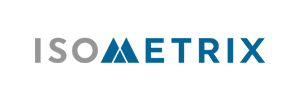Environmental, Health and Safety (EHS) at its best is proactive. When it comes to improving EHS performance, leading indicators act as an early warning system. Measuring the correct leading indicators empowers your team to be proactive, develop a better EHS culture and reduce the occurrence of incidents.
Lagging indicators, on the other hand, are easy to measure, but they only measure the outcome of a process such as after an incident has taken place. By only measuring lagging indicators in EHS, you are not taking full advantage of the wealth of data available.
So you are unable to be proactive in preventing key risks from materializing or incidents occurring in the first place.
Most companies already collect the data needed for creating effective leading indicators. But, more often than not, this data must be first compiled and exported from multiple EHS platforms and then analyzed outside of these applications.
This process is ineffective, subject to human error, and time-consuming. Furthermore, this analysis only takes a snapshot of the past, showing what has happened, rather than preventing what is likely to happen.
What are leading indicators?
A leading indicator is a measure, preceding or indicating a future event, used to drive and measure activities carried out to prevent and control injury. Leading indicators can also be captured and managed as Key Risk Indicators. The National Safety Council (NSC) defines three types of leading indicators:
1. Operations-Based
Operations-based leading indicators are site-specific and relate to infrastructure and operations. Examples include:
• Compliance
• Change management
• Equipment maintenance
• Risk assessment
2. Systems-Based
Systems-based leading indicators relate speak to the EHS Management System. These indicators show if your processes are functioning effectively and driving continuous improvement. Examples include:
• Hazard identification
• Risk management
• Corrective action
• Employee training
• Audit program
• Reporting and analysis
3. Behavior-Based
Behavior-based leading indicators are metrics that quantify individual workplace behaviors. A strong safety culture is important for ensuring the success of an organization's overall EHS effectiveness. Examples include:
• Leadership commitment
• Employee participation
• Safety perception surveys
A survey conducted by the NSC identified several common barriers to implementing leading indicators. These include "the difficulty in developing consistently actionable leading indicators, lack of a reliable relationship between leading and lagging indicators, and sporadic non-standardized benchmarking of leading indicators."
While leading indicators are a form of predictive analytics, effective predictive analytics uses data mining, statistics, modeling, and machine learning to analyze vast sources of information to determine future trends. In EHS, especially in the extractive industries, predictive analysis is a proactive way to identify potential problems and prevent them from occurring at all.
Predictive analytics of any kind is an impossible task without technology. For organizations that still rely on manual data collection and reporting, who are using cumbersome spreadsheet-based systems, or have a myriad of unintegrated point solutions, risk management will always be on the back foot, reacting to rather than preventing the occurrence of incidents.
By using selected data that companies are already collecting, and organizing that data according to leading indicators, a technology solution can use predictive modeling and algorithms to highlight key risks or indicators and notify the necessary people or group of people.
How IsoMetrix helps
The IsoMetrix EHS platform has the technological ability to capture leading indicators defined for an organization and present them as key risks which can be assessed. Next, IsoMetrix can be configured to generate notifications based on triggers or when predefined thresholds are met. These notifications can be based on a single input, such as an increasing trend in the number of incidents over a period; or the overall increase in audit findings; else the result of a combination of factors, such as the number of grievances coupled with the tone and the level of influence of the grievant. Another combination could be the levels of water storage facilities at an operation and the likelihood of a heavy rainfall event, which could lead to overflows. This early warning concept, therefore, allows for intervention before consequences occur. Through the IsoMetrix dashboards, the outputs can be displayed in a variety of visuals
ABOUT THIS COMPANY
IsoMetrix
IsoMetrix is a leading supplier of integrated software for governance, risk, and compliance.
HEAD OFFICE:
- Johannesburg, South Africa, Block 7, Fourways Office Park, Roos Street, Fourways, 2191
- Phone: +27 11 465 6944
- Web: www.isometrix.com
- Email: info@isometrix.com


























